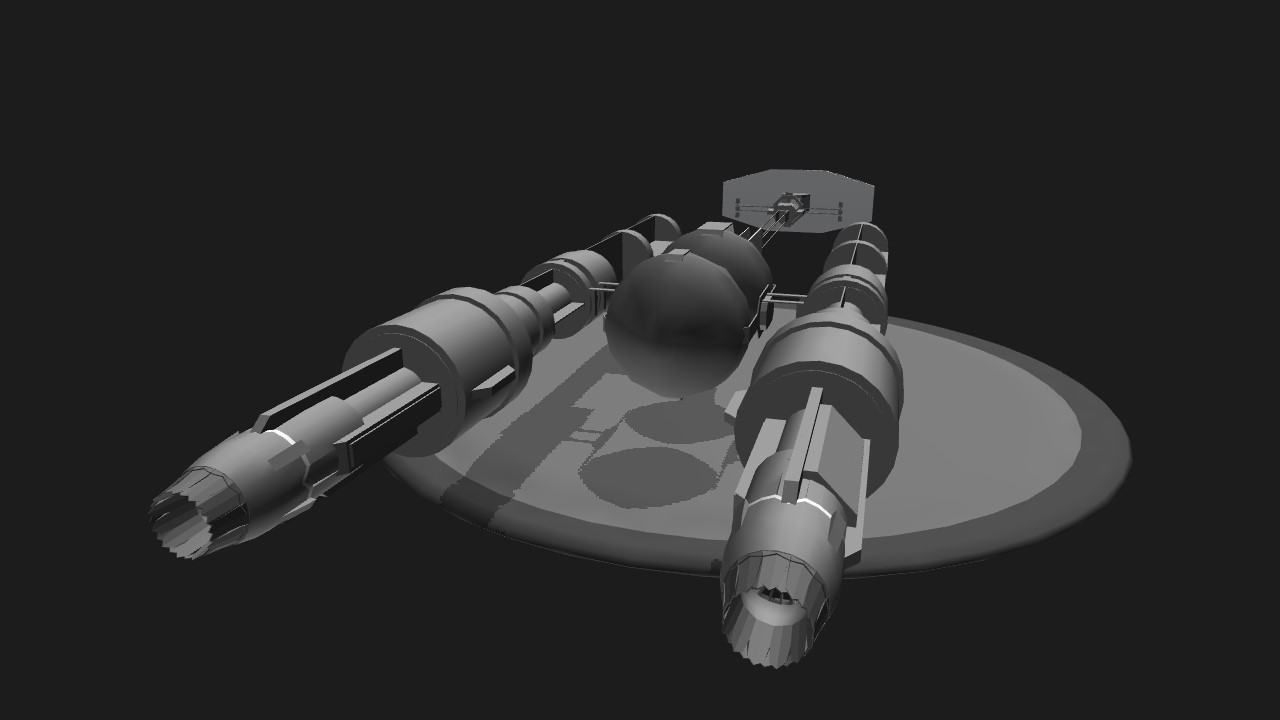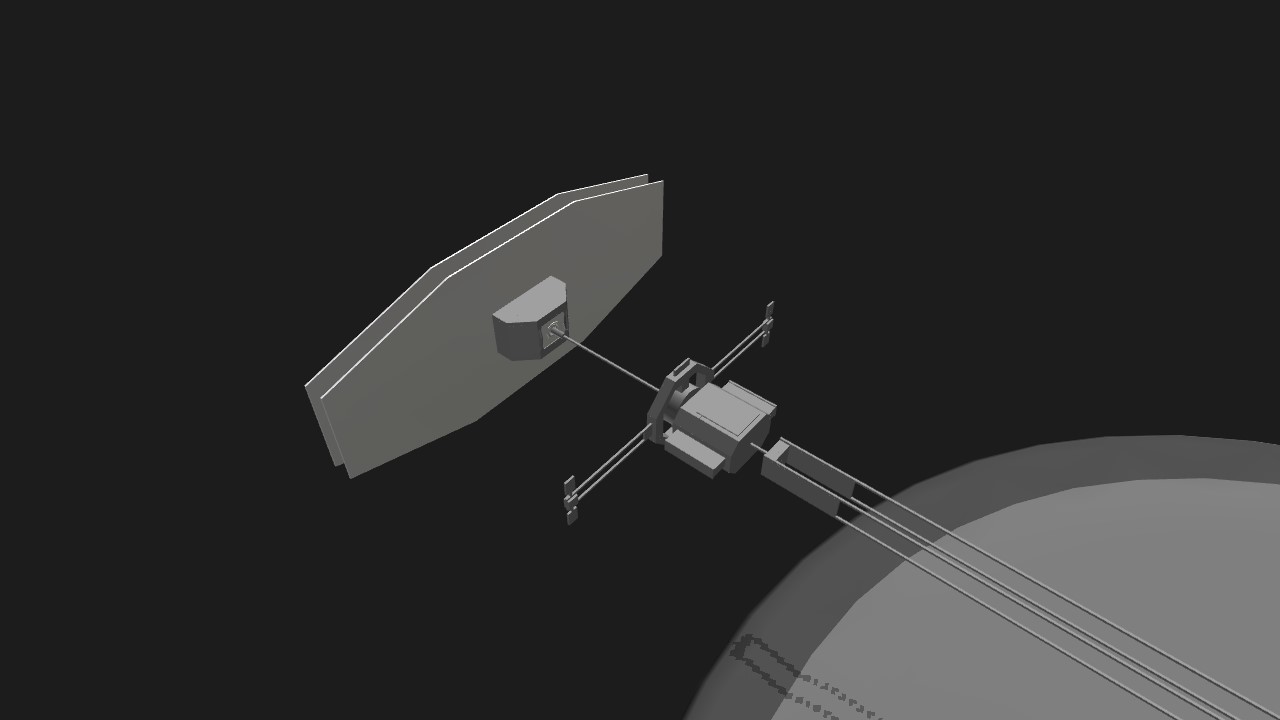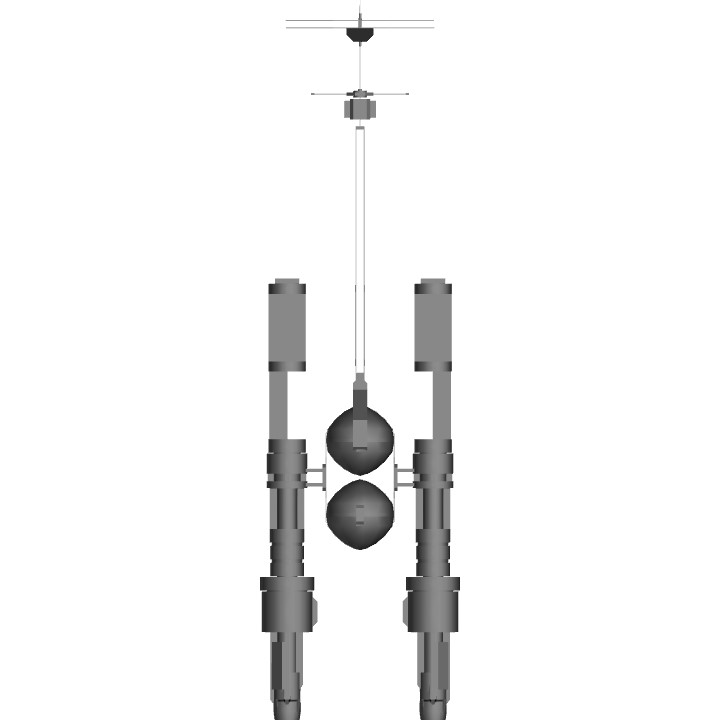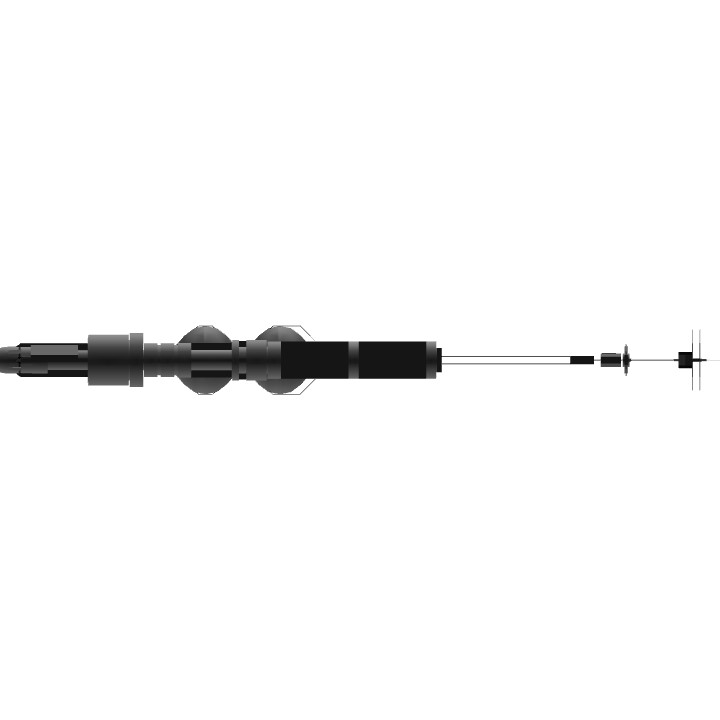HUGE wall of text approaching! Only read if you like spaceships and science (I do)!
An interesting scenario kinda prompted me to build this. I thought, the year is 2100 and everyone's involved in an intrastellar war. What I mean by that is, there’s fighting in the area from the sun to Pluto. A resource war makes some sense, ‘cause we’d be strip-mining Mercury and Venus and the Asteroid Belt, and maybe have a base orbiting Jupiter siphoning off that sweet hydrogen gas. Aaanyway, the US being the US, is set on winning said war, so they get the big guys together (DARPA, NASA, all the aerospace and technology companies) and build a state-of-the-art warship to spearhead the war effort. This is my take on what that ship might look like and its capabilities. Keep in mind, this hinges on some personal assumptions as to what humanity has accomplished by the 22nd century, like sizable production and storage of antimatter and the usage of super lightweight and thin construction materials.
Propulsion:
The Solar System is really big, well over 9 billion kilometers across. And when you're fight a war that spans the solar system, it's no bueno if your ship takes decades to reach the far fronts like the gas giants (traveling from Earth). So you have to go really, really fast, and that means huge engines. Realistically, a ship like this would have engines and fuel storage that takes up at least 80% of the total mass (It would actually be more accurate to call this a pair of engines pushing an offensive weapons platform). Antimatter and fusion are the two most viable methods of propulsion. Since antimatter is 100% efficient, it would be used for travel between gravity wells, while fusion would be used for orbiting, deorbiting, and combat maneuvers. One problem is that the engines will produce a ton of heat energy, so radiators are mounted on the front of the engines to disperse most of the heat. They’re the large, flat sections.
Central Structure:
The engines also spew out a ton of radiation, so to be safe, the crew and cargo need to be located a good distance away. A central truss would separate the engine block from the rest of the ship. Would be quite thin, and probably be made out of superstrong graphene, or its lesser known distant cousin, carbyne.
Storage and Habitation:
The large block would hold cargo, while the octagonal ring would house the crew. The ring rotates to create an artificial sense of gravity. Protruding from the habitation ring are two trusses. On the ends of each truss would be a combination of solar paneles, communication arrays, and point-defence systems.
Shield:
The two large, flat layers at the front of the ship are physical debris shields. IRL, they would be almost 100% reflective, which I’ll explain later. In interplanetary travel, they would serve to protect the ship from stray particles that might otherwise damage the more important parts.
Offensive Capabilities:
I can see 4 types of weapons being feasible in future space combat:
Plasma
Direct Energy Weapons (lasers, basically)
Kinetic Weapons (railguns/coilguns)
Nuclear Weapons
In essence, plasma is really, really hot gas. Just imagine chucking a big chunk of the sun at an enemy ship. If it hits, it will definitely cause some serious damage.
I feel like the most prevalent weapons will be lasers. In space, lasers can basically travel forever without dissipating or losing energy, so they have both the destructive capacity and the range. Most of the lasers would be smaller, used for destroying physical projectiles and targeting specific enemy systems. But if you take a look at the spike protruding from the front of the debris shield, that’s what I would classify as a superlaser: Think, Death Star. Unlike the movies, being hit with this laser wouldn’t cause your target to immediately explode, but this laser packs enough power to slice an enemy battleship or orbital platform cleanly in half. In an active battle, this laser would only be fired once or twice at the most, due to the fact that it’s pretty dangerous to keep such tremendous energy primed for firing.
Kinetic weapons would be big metal bullets or slugs fired at the enemy ship. Though slower than lasers, these projectiles would be fired at speeds at or over Mach 25, closing distances of thousands of meters in seconds. Though not explosive or superheated, the projectiles could easily tear huge holes through enemy armor, or cause catastrophic damage to vital systems.
Lastly are nuclear weapons. In space, while the force from a nuclear blast still exists, it would be significantly weakened. The real advantage is the EMP effect that the explosion would produce, disabling or destroying enemy electronic components. Nuclear weapons would most likely be delivered in rocket-powered missiles, not unlike modern day cruise missiles.
Weapons would be mounted on the habitation ring and the cargo section.
Defensive capabilities:
For every weapon, there is a suitable counter. Plasma is surprisingly easy: since it is easily influenced by magnetic fields, electromagnetic shields would be projected around ships (with the added benefit of deflecting most particles in interplanetary travel). Laser weapons also have an easy defence: just use mirrors! A reflective surface would effectively dispel the energies of a laser weapon. Besides the debris shields being reflective, many other important parts of the ship would be coated in reflective materials. Ship armor would serve as a basic secondary defence against lasers. For kinetic weapons, or railguns, the best defence would be more railguns, specifically designed to fire flak. Striking an incoming projectile with flak would deform or deflect the round, reducing most of the impact damage. Rocket-powered missiles are by the far the easiest to defend against: some point-defence lasers should do the trick.
With a ship of this size and power, you might think it would be best to cover the entire thing with meters of armor, but that would be a huge mistake. In the absence of fictional “warp drives,” literally every gram counts when you’re traveling in space. The more armor you have, the larger your engines have to be, which is never a good thing. On a battleship such as this, the most important areas housing personnel and weaponry would be the most heavily armored.
Tactics:
To date, no popular science fiction movie has ever depicted accurate conflict in space. First of all, it’s very hard to move, in all aspects. It takes a long time to start moving, or slow down, or turn, or basically do anything. Combat would never happen in the midst of interplanetary travel because, on the very slim chance that you pass by an enemy ship, you would speed by each other at thousands of kilometers per hour, with no chance to slow down or even fire a shot. Instead, all fighting would occur in gravity wells: that is, around the planets. Combat maneuvers would be focused on adjusting your ship’s orbit to your advantage, or entering and exiting orbits at beneficial times.
In space, stealth doesn’t exist. This ship would be well over 2 kilometers long, and its engines would be emitting exhaust hotter than the surface of the sun. The only element of surprise would be entering a planet’s orbit while the enemy ship is on the far side.
In Summary:
Pros:
The ship is freaking huge, and it has a powerful laser weapon. Great for psychological warfare!
Other than that, none, really. The Ad Astra kinda sucks…
Cons:
Slow and unmaneuverable in combat.
Chock-full of prime targets. Given the nature of their size, the engines and fuel spheres would pretty much be target #1 for enemy combatants.
If, by some terrible fate, the enemy breaks apart the central truss, you’re pretty much screwed.
Sooo… This is the USS Ad Astra. It’s a battleship designed for intrastellar combat operations. Yay!
Specifications
General Characteristics
- Created On iOS
- Wingspan 24.3ft (7.4m)
- Length 87.4ft (26.6m)
- Height 8.4ft (2.6m)
- Empty Weight 17,342lbs (7,866kg)
- Loaded Weight 24,840lbs (11,267kg)
Performance
- Power/Weight Ratio 2.714
- Wing Loading 2,637.5lbs/ft2 (12,877.2kg/m2)
- Wing Area 9.4ft2 (0.9m2)
- Drag Points 22051
Parts
- Number of Parts 329
- Control Surfaces 0
- Performance Cost 922







Wow the intensions are VERY VERY LONG LMAO
@YuukaNeko
Alright I MAY be able to get this to fly but it will look a bit ugly, I'm thinking of making wings that look like solar panels that fold into the ship, but I'll also need to utilize VTOL engines to make it fly
Nyaa <3 Thanks for all the love!! And you're welcome to make this thing fly, I can barely even build working planes so the thought never crossed my mind X3 @Supercraft888
@YuukaNeko
Do you mind if I "TRY" to make this fly?
@YuukaNeko
Holy crap, I just read that stuff and I love it! I'm not to immersed in physics so that electromagnetic stuff was like wah? But I loved it cause yah know, SPACE!!! Also I really like the realistic design of this spacecraft. Over all 10/10
MAC Cannon kind of railgun. A bunch of them mounted in different places @ArgentumFen
Also can penetrate 3 concrete walls as off today's navel rail gun @ArgentumFen
2 coil things plus shell Eletricfied stuff idk
@YuukaNeko By railgun do you mean like a battery of them (sail warship kind) or a single high-powered one(MAC from Halo universe).
@CertaNatusAerospaceSystems Correct me if I am wrong, but are you referring to ion drives? Those take too long to accelerate, so would be useless for manoeuvring. Anyways, fusion drives (hydrogen fusion scoop) is much faster---- I think there were calculations that it could reach 97% of the speed of light (read that somewhere in Michio Kaku’s physics of the future)
I'm glad you like it! ;) @TimeTraveler
Thanks <3 and it would be pretty interesting to on SP... However, I have no idea how to mod, so I can't see a suitable way to make the heat shield Q-Q @BogdanX
This is awesome..... And finally! SOMONE who loves spaceships and science too!
Woah, the Icarus 2 is pretty cool! I love that super massive heat shield X3 although I would love to know what the propulsion method is... Probably just conventional rockets? @BogdanX
All me! I love science, so I did a ton of researce on various topics such as physics and weaponry... Alot of the stuff I already knew ^^ @BogdanX